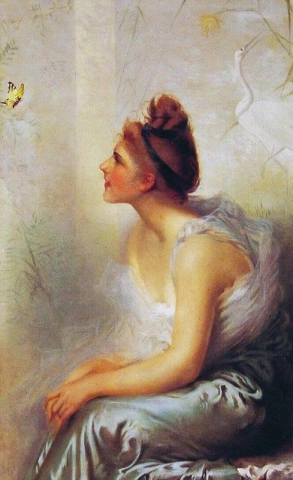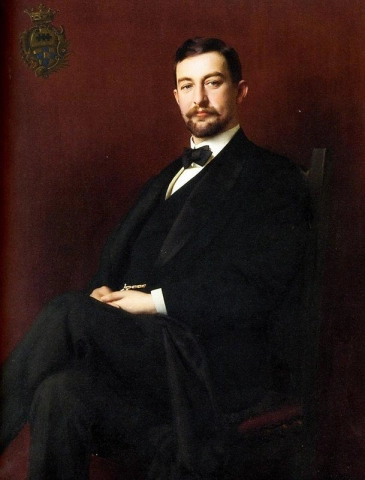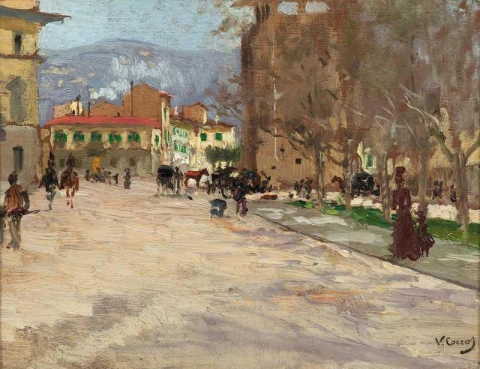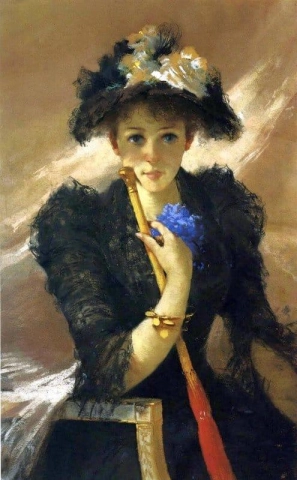

Hand painted reproductions of Vittorio Matteo Corcos
Vittorio Matteo Corcos: The Master of Belle Époque Portraiture
Vittorio Matteo Corcos (1859–1933) was an acclaimed Italian painter best known for his captivating portraits that embody the elegance and refinement of the Belle Époque period. His works are celebrated for their meticulous detail, striking realism, and the ability to capture the inner world of his subjects. Corcos masterfully blended academic techniques with a modern sensibility, creating portraits that remain iconic in their depiction of aristocracy, intellectuals, and women of the era.
Early Life and Education
Born on October 4, 1859, in Livorno, Italy, Vittorio Matteo Corcos demonstrated a keen interest in art from a young age. Encouraged by his family, he enrolled at the Accademia di Belle Arti in Florence, where he received formal training in traditional academic painting. His instructors recognized his talent for portraiture early on, noting his ability to capture lifelike details and emotional depth.
Eager to refine his skills further, Corcos continued his studies in Naples under Domenico Morelli, a leading figure in Italian Romanticism. Morelli's emphasis on vibrant color and narrative richness profoundly influenced Corcos, inspiring him to bring life and story to his portraits. Corcos later moved to Paris, where he worked with the famous art dealer Adolphe Goupil, immersing himself in the artistic trends of the Belle Époque.
Artistic Development and Style
Vittorio Matteo Corcos’s painting style is a harmonious blend of academic precision and modernity. While grounded in the technical rigor of his classical training, his works often convey a sense of immediacy and intimacy that sets them apart from traditional academic portraiture.
Corcos was particularly skilled in capturing the textures of fabric, the luminosity of skin, and the subtleties of expression, making his portraits strikingly lifelike. His works frequently depict elegant women in sophisticated settings, reflecting the social and cultural milieu of the late 19th and early 20th centuries.
One of Corcos’s defining traits was his ability to convey the personality and emotional depth of his subjects. In works such as Dreams (1896), the gaze of the young woman captures both defiance and introspection, inviting viewers to speculate on her thoughts and emotions. This psychological complexity became a hallmark of Corcos’s portraits, earning him widespread acclaim.
Themes and Significance
Corcos’s art captures the essence of the Belle Époque, a period marked by cultural sophistication and artistic innovation. His portraits often focus on themes of beauty, elegance, and modernity, portraying his subjects as confident individuals with unique identities.
One recurring theme in Corcos’s work is the role of women in a changing society. Many of his portraits depict women who embody the ideals of the "New Woman"—intelligent, independent, and self-assured. These representations were groundbreaking at the time and reflected broader societal shifts during the late 19th century.
Corcos’s ability to marry technical excellence with contemporary themes made his works highly sought after by aristocrats, intellectuals, and members of high society. His portraits not only serve as visual records of his era but also as insightful commentaries on the cultural and social dynamics of his time.
Achievements and Influence
Throughout his career, Vittorio Matteo Corcos gained international recognition as one of the leading portraitists of his era. His works were exhibited in prestigious salons across Europe, including the Paris Salon, where they received critical acclaim for their technical brilliance and emotional resonance.
Corcos’s reputation extended beyond Italy, as he painted numerous prominent figures, including royalty, artists, and intellectuals. His ability to adapt his style to suit the preferences of his patrons while maintaining his artistic integrity solidified his position as a master of portraiture.
In addition to his portraits, Corcos also created genre scenes and landscapes, showcasing his versatility as an artist. However, it is his portraits that remain the most celebrated aspect of his oeuvre, serving as timeless reminders of the elegance and sophistication of the Belle Époque.
Legacy
Vittorio Matteo Corcos’s work continues to captivate audiences with its combination of technical mastery, emotional depth, and cultural relevance. His portraits offer a glimpse into the lives of his subjects, preserving the spirit of an era marked by beauty, refinement, and change.
Today, Corcos’s paintings are housed in major museums and private collections around the world, including the Uffizi Gallery in Florence and the Galleria d'Arte Moderna in Rome. His ability to capture the complexities of human emotion and the allure of the Belle Époque ensures his enduring legacy as one of Italy’s greatest portrait painters.
Where to Find Reproductions of Vittorio Matteo Corcos’s Art
To bring the timeless beauty of Corcos’s portraits into your home, high-quality oil painting reproductions are available through POD (Painting On Demand). These reproductions faithfully replicate the elegance and charm of Corcos’s masterpieces, allowing art lovers to enjoy his exquisite work in their own spaces.
Imagine owning an original-style painting by one of the greatest artists in history. At POD, we offer you the chance to make this dream a reality. Each canvas is faithfully reproduced down to the smallest detail, allowing you to experience the beauty of the artist’s vision in your own home.
Our reproductions are crafted by experienced painters using the finest materials and time-honored methods. We are committed to delivering works of exceptional quality that will inspire and bring joy to your family for generations to come.






















































